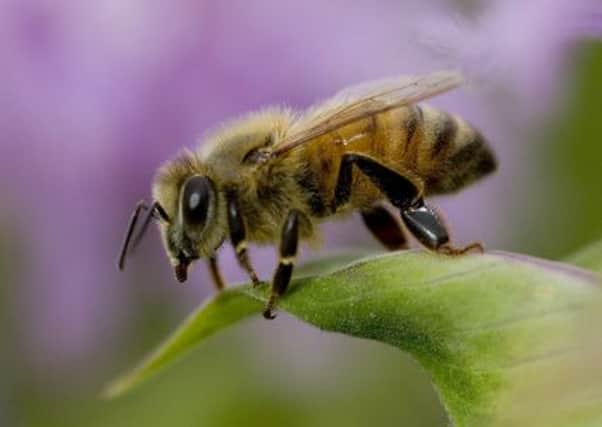Legs are a handy tool in the pollen race


We humans have evolved so that our legs do one job pretty well. They take us from place to place and hold us up, but they don’t have a sense of smell. Indeed, the very idea seems absurd.
But honeybees have developed to make the fullest possible use of every micrometre of their bodies. Almost every part of their anatomy seems designed to do two jobs at once.
Advertisement
Hide AdAdvertisement
Hide AdIf a bee needs to smell something it can do so through its antennae but it can also detect chemical odours through its feet. Since bees send chemical messages that help them do things like recognise each other and know whether their Queen is strong, this also means that bees are talking to each other via their legs.
They also get messages that way about where to find food. Most people have heard of the honeybee waggle dance. This famously lets one bee do a figure of eight dance which tells other bees which direction to go to find a food source, how far away it is and what plant they will find when they get there.
What few people realise is that the dance is done in the dark. Bees can’t see the figure of eight that the dancing bee is making. Remarkably it is their legs that get the message. They feel the vibrations that are being made on the wax comb where the bee is dancing and, in the pitch black interior of the hive, this is enough for them to be able to learn where they need to fly.
When they arrive at the source of food the bee can be left with a bit of a problem. There may be lots of pollen on the plant but it isn’t exactly easy for a flying insect to carry back great quantities of food.
Advertisement
Hide AdAdvertisement
Hide AdThe solution to this problem is beautifully simple. Honeybees have a basket on their back legs and they can fill that basket with pollen, pack it down tightly and use it to bring the protein and vitamins that they need back to the hive. This ability has clearly evolved over millions of years to prevent them forgetting their shopping bag.
When they arrive back at the hive you can see the pollen. It comes in different colours according to the time of year and the source of the food. Late in the season my bees were bringing back yellow pollen from Himalayan Balsam. In high summer it was more orange and may have come from dandelions - an excellent source of pollen and nectar.
At the start of spring I hope they will be going to the plentiful hazelnut trees in our local hedgerows. These are pollinated by the wind and so have no nectar but they are full of protein rich pollen and that is invaluable early in the year.
The operative word is hoping. Early spring is the really risky time for honeybees. They can usually get through the cold alright. But by spring they need to start breeding and that takes a lot of energy at exactly the time when they have used up the bulk of their winter stores.
Advertisement
Hide AdAdvertisement
Hide AdThe old tired bees that have lived through the winter have to fetch enough food to raise new energetic bees to replace them. There are occasional days when I understand exactly how they feel.
Over the next few weeks I will be looking at the rear legs of my bees with some nervousness. If the weather is dry and it’s warm enough, and it isn’t too windy, then they’ll be out there. And if I see enough of them coming back with brightly coloured sacks full of pollen on their back legs then I’ll know everything is going to be alright and they’ve come through the worst. They’ll be ready to take on another year and so, I trust, will I.